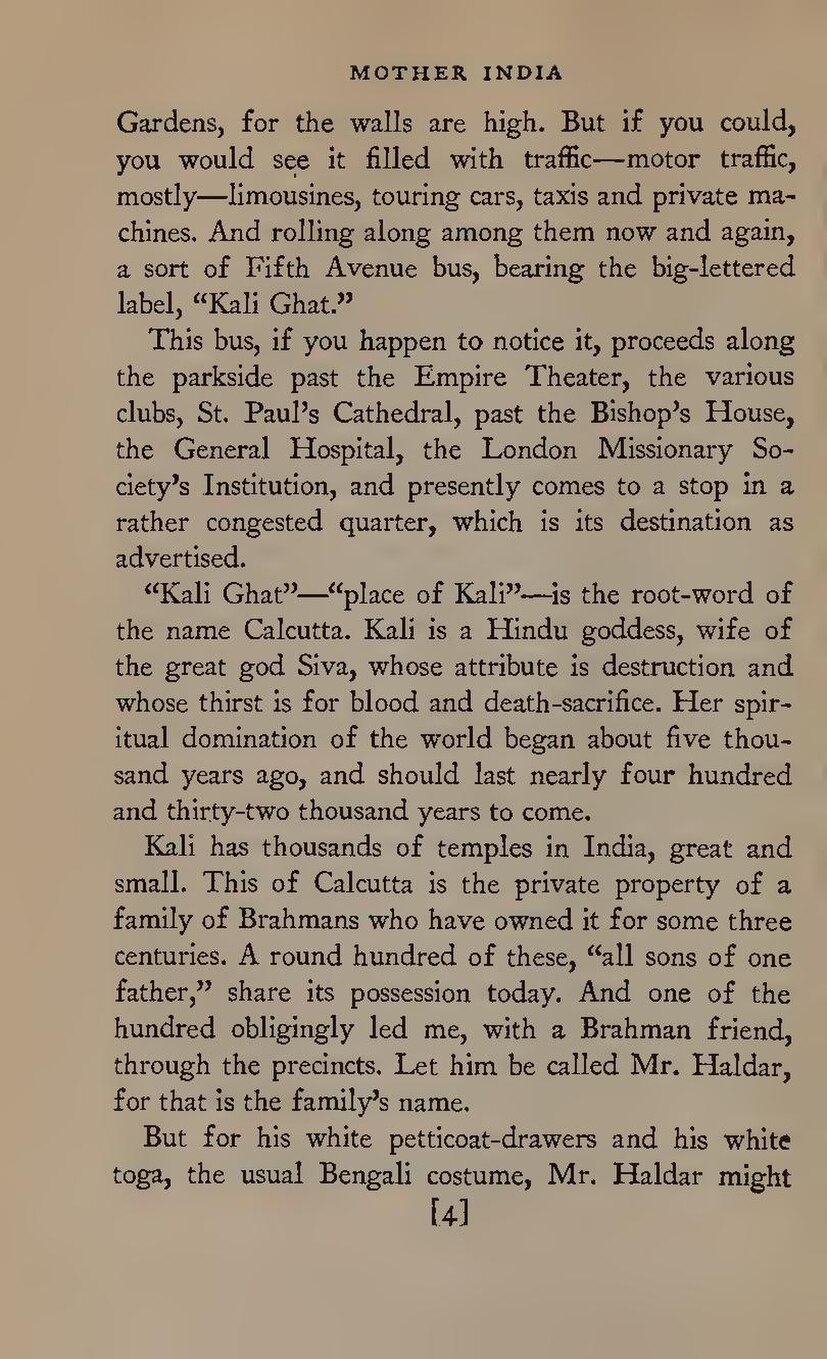MOTHER INDIA
Gardens, for the walls are high. But if you could, you would see it filled with traffic—motor traffic, mostly—limousines, touring cars, taxis and private machines. And rolling along among them now and again, a sort of Fifth Avenue bus, bearing the big-lettered label, “Kali Ghat.”
This bus, if you happen to notice it, proceeds along the parkside past the Empire Theater, the various clubs, St. Paul’s Cathedral, past the Bishop’s House, the General Hospital, the London Missionary Society’s Institution, and presently comes to a stop in a rather congested quarter, which is its destination as advertised.
“Kali Ghat”—“place of Kali”—is the root-word of the name Calcutta. Kali is a Hindu goddess, wife of the great god Siva, whose attribute is destruction and whose thirst is for blood and death-sacrifice. Her spiritual domination of the world began about five thousand years ago, and should last nearly four hundred and thirty-two thousand years to come.
Kali has thousands of temples in India, great and small. This of Calcutta is the private property of a family of Brahmans who have owned it for some three centuries. A round hundred of these, “all sons of one father,” share its possession today. And one of the hundred obligingly led me, with a Brahman friend, through the precincts. Let him be called Mr. Haldar, for that is the family’s name.
But for his white petticoat-drawers and his white toga, the usual Bengali costume, Mr. Haldar might
